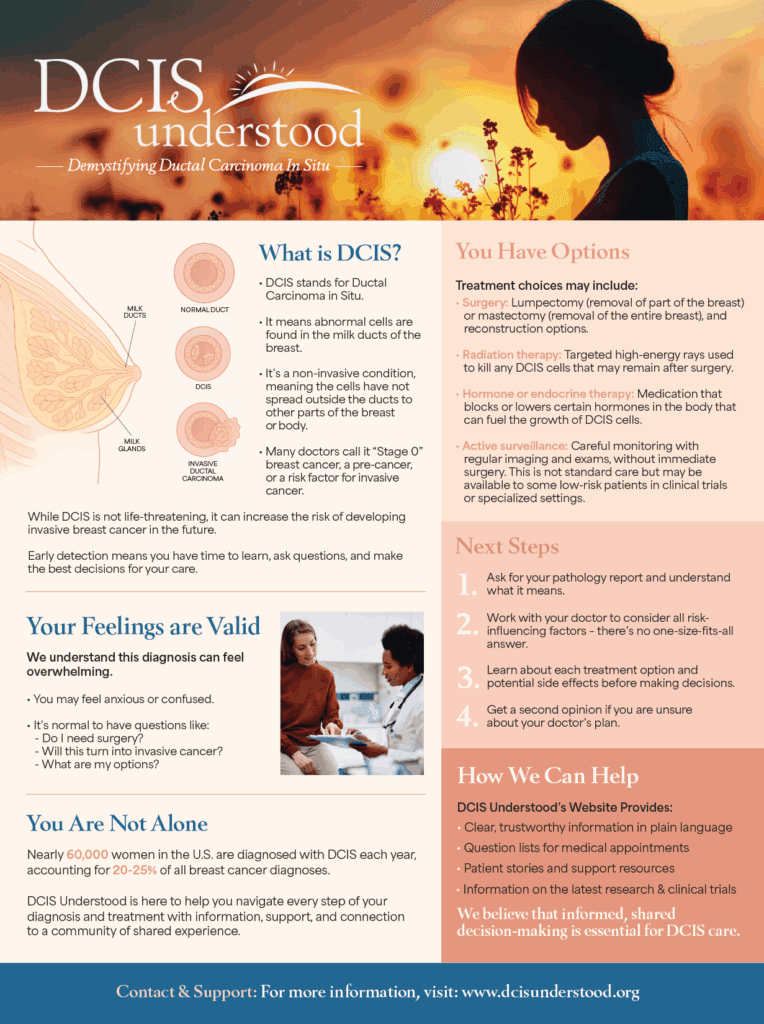Don’t Panic!

Hearing any diagnosis that includes the word “cancer” or “carcinoma” is terrifying, and for some patients, that may lead to pursuing the most aggressive treatment in the shortest time possible. However, it is important to remember that DCIS is NOT an emergency. You have time to slow down and carefully evaluate your next steps.
DCIS does not need to be treated immediately because the abnormal cells are contained within the milk ducts. In some cases, if left untreated long enough, the DCIS cells can break through the wall of the milk duct and become invasive breast cancer. But most DCIS takes a long time — possibly years or even decades — to develop into invasive cancer, and some DCIS will never develop into invasive cancer or even grow at all. That is why understanding your individual risk profile is so important, because it can impact the timing and types of treatment that you choose to pursue.
Because the science is far from settled as to the natural progression of DCIS, questions remain as to optimal treatment, particularly for low risk patients. And while there is a standard of care, most DCIS patients have more than one option for a reasonable treatment plan. There are many factors that might influence decision-making, and different doctors may have different recommendations. That is why it is not uncommon for DCIS patients to get more than one opinion.
DCIS patients are well-served to take their time to learn about their diagnosis, assess their individual risk for developing invasive cancer, and evaluate all their treatment options, including side effects and corresponding risk of recurrence and survival. Most important is choosing a doctor with whom you feel entirely comfortable, and it is okay if this takes time. With DCIS, knowledge is power. Patients who take the time to investigate all their options and avoid knee-jerk decision-making are typically more satisfied with their treatment and outcomes.
DCIS Understood Patient Brochure
